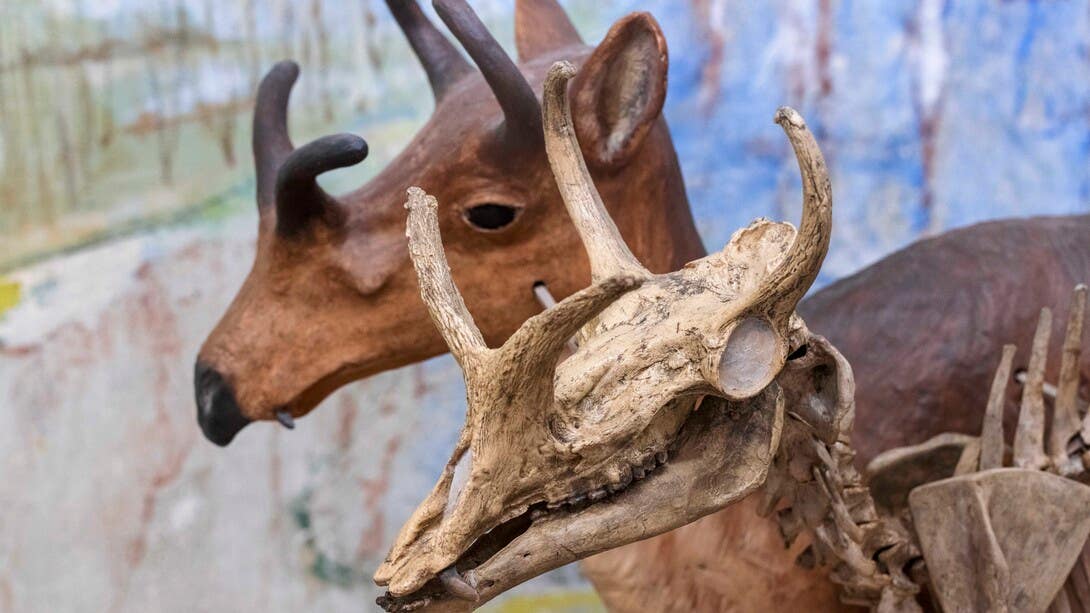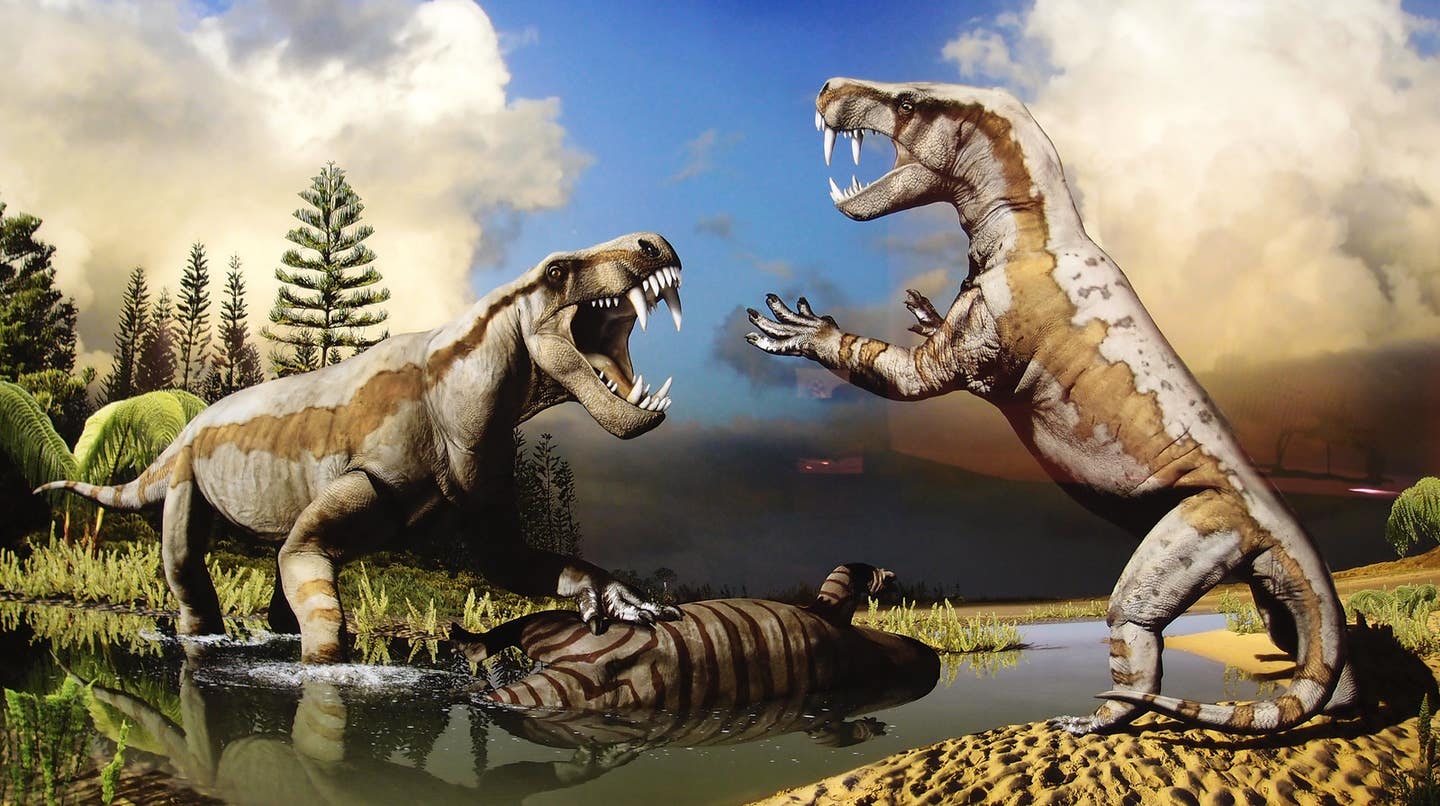Groundbreaking study reveals how species diversity on Earth changed over the first 65 million years
Study delves into the fossil record spanning 66 million years, examining changes in ecosystems and species diversity across North America.

The syndyoceras — or “little antelope,” as some among the museum’s staff refer to it — displayed in one of the museum’s glass display cases, is an ancient species of antelope. (CREDIT: Craig Chandler / University Communication)
Understanding the present often requires a look at the past. New research from the University of Nebraska–Lincoln delves into the fossil record spanning 66 million years, examining changes in mammalian ecosystems and species diversity across North America.
Led by recent doctorate Alex Shupinski and co-authored by Kate Lyons, associate professor in the School of Biological Sciences, the study provides a comprehensive view of species diversity throughout the first 65 million years of the Cenozoic era, up until the arrival of humans. It explores how climate and environmental factors, including changing landscapes, influenced animal life on the continent.
Published in Proceedings of the Royal Society B, the findings offer insights into how mammals rebounded after the last mass extinction event, which eradicated non-avian dinosaurs.
“Beginning 66 million years ago, we see a transition from a completely sub-tropical environment across North America to grasslands, then a frozen savanna, and finally, the Ice Age,” Shupinski said. “This study shows how species changed through time, across many ecological, environmental, and climatic shifts, allowing us to compare these events at different spatial scales.”
The researchers divided the fossil record of the Cenozoic era into million-year increments and used three indices of functional diversity—quantifying changes in community structures using mammalian traits—to examine mammalian communities both locally and continentally.
For most of the Cenozoic era, local and continental measures of functional diversity differed. However, during the first 10 million years following the extinction of non-avian dinosaurs, all measures of functional diversity increased, both locally and across the continent.
“That was fascinating to see, that for most of the Cenozoic, functional diversity was uncoupled across time and spatial scales, except this one period,” Shupinski said. “For 10 million years, all the measures are changing in the same way. Then, around 56 million years ago, we observe a massive immigration of mammals into North America from other continents, leading to a divergence of functional diversity.
“Communities are changing at different times, at different rates, and in different directions,” she continued. “We might see local diversity of roles increasing, but continentally, they’re decreasing.”
Lyons noted that some changes among mammalian species can be attributed to environmental shifts, such as cooling and warming periods or the transformation of forested areas into grasslands. However, these environmental changes did not match the disruption caused by the dinosaur extinction.
"This insight could potentially help pinpoint areas or communities under particular stress,” Lyons said. “We may be entering a sixth mass extinction event. If so, we might expect to see communities at the forefront of this extinction respond similarly to patterns observed after the non-avian dinosaur extinction."
In conservation paleobiology, tracking past ecosystem changes over long periods helps scientists and the public understand current biodiversity crises. This study offers a thorough analysis of the age of mammals and suggests what the future may hold.
“If we observe a similar response in the functional diversity of modern community structures, it could be a valuable conservation tool,” Shupinski said. “We can highlight communities experiencing the most disturbance and at highest risk of changes in their ecological services and functions.”
Additional authors on the study include Peter Wagner, professor of Earth and atmospheric sciences at Nebraska, and Felisa Smith of the University of New Mexico, Albuquerque.
This research underscores the importance of historical context in understanding current ecological challenges. By examining the past, scientists can better predict and potentially mitigate the impacts of ongoing and future biodiversity crises.
Note: Materials provided above by the The Brighter Side of News. Content may be edited for style and length.
Like these kind of feel good stories? Get the Brighter Side of News' newsletter.
Rebecca Shavit
Science & Technology Journalist | Innovation Storyteller
Based in Los Angeles, Rebecca Shavit is a dedicated science and technology journalist who writes for The Brighter Side of News, an online publication committed to highlighting positive and transformative stories from around the world. With a passion for uncovering groundbreaking discoveries and innovations, she brings to light the scientific advancements shaping a better future. Her reporting spans a wide range of topics, from cutting-edge medical breakthroughs and artificial intelligence to green technology and space exploration. With a keen ability to translate complex concepts into engaging and accessible stories, she makes science and innovation relatable to a broad audience.



